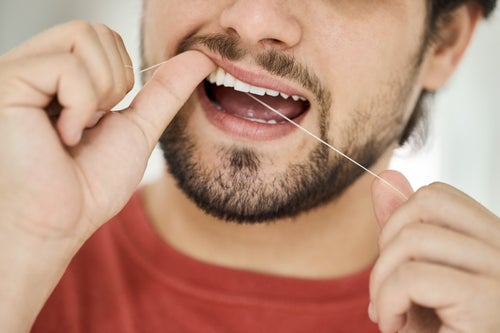

Just when you think you’ve mastered the art of everyday living, you realise that you’ve been doing an essential part of it all wrong.
First, came the news that you’re not meant to boil your pasta in just any amount of water ― instead, you’re supposed to keep the liquid to a minimum for a starchier sauce emulsifier.
And now, it turns out that when you floss your teeth matters ― and I, for one, have been on the wrong side of the divide from time to time.
You probably already know that flossing is really, really good for your teeth. But you might not have known that, per none other than the NHS, “It’s best to floss before brushing your teeth” rather than after.
Why?
The purpose of flossing, as distinct from brushing, is to remove the particles of food and plaque in your teeth that bristles just can’t reach. This helps to prevent cavities and keep your breath fresh.
But, as Healthline advises, it turns out that sometimes particles don’t get fully removed from your teeth by flossing alone.“However, when you floss and then brush, the brushing action removes these released particles from the mouth. As a result, there’s less dental plaque in your mouth, and you’ll have a lower risk of developing gum disease,” they say.
On top of that, per an admittedly small 2018 study, it’s much easier for the fluoride in your toothpaste to do its job in protecting your teeth if it’s working on post-floss (and particle-free) gnashers.
Gross, but true.
Huh!
I know! But let’s be clear here ― flossing after brushing is much better than never flossing at all.
If you’re looking for the best way to achieve flossing perfection, the NHS recommends taking the following steps:
- Take 30cm to 45cm of floss or dental tape and grasp it so you have 3cm or 4cm of floss taut between your hands.
- Slip the floss or dental tape between the teeth and into the area between your teeth and gums, as far as it’ll go.
- Floss with 8 to 10 strokes, up and down between each tooth, to dislodge food and plaque.
Just try to do it before you brush, experts recommend.